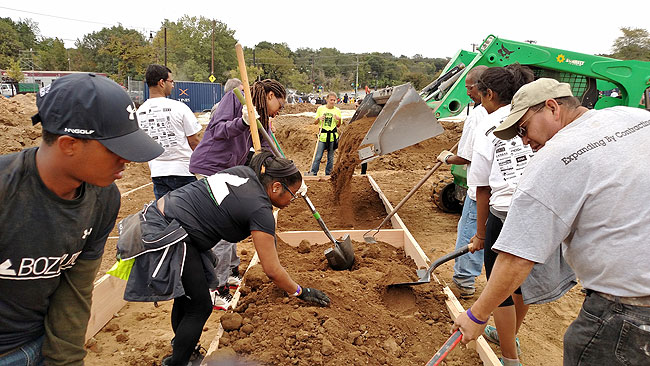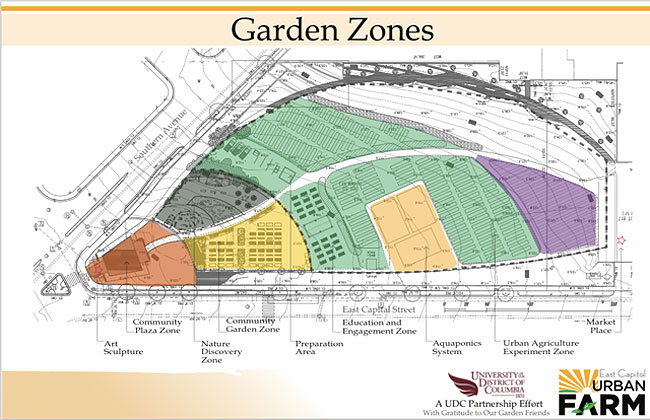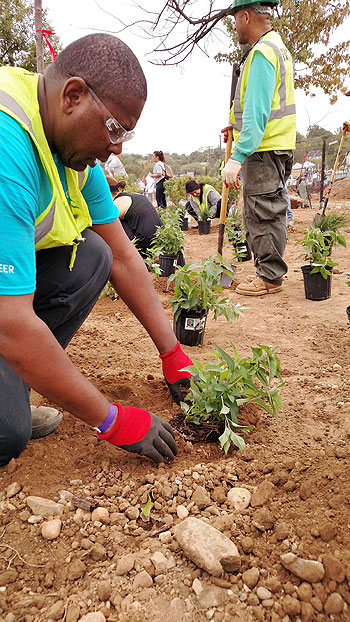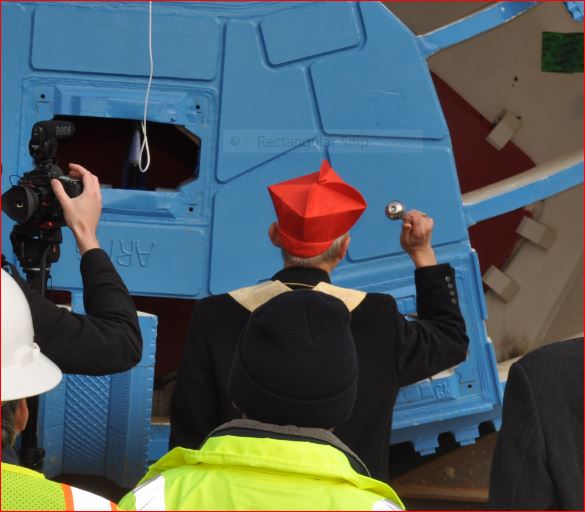Bronx River Greenway Groundbreaking
By Abu Moulta-Ali
“A Tree Grows, A River Flows”
Descending the stairs at the West Farms Sq/E. Tremont Ave stop on the 2 train, I thought I had gotten off at the wrong stop. I was told this was the closest stop to Starlight Park where a groundbreaking event was being held to celebrate a multi-million dollar project to restore the Bronx River. I asked a school crossing guard for directions to Starlight Park but she looked at me like I was crazy, so I asked her “Do you know how I can get to the Bronx River?” She said, “There’s no river around here, but behind the school there’s a stream.” While she didn’t know it, that stream was really a tributary of the Bronx River.
A tree may grow in Brooklyn, but a river flows in the Bronx. The Bronx River is New York City’s only freshwater river. The Bronx River, once a community amenity and center for recreation, quickly became an open water sewer for industrial and residential wastes as New York City’s population exploded during the 19th and 20th centuries. But, in 1974, a band of community activists formed Bronx River Restoration and began the arduous process of cleaning up and restoring the river. Once a dumping ground for abandoned cars, the Bronx River now attracts 5,000 recreational paddlers and rowers each year and serves as an outdoor laboratory to educate local students and the public about the river, and train volunteers to monitor the river’s conditions.
On October 6, 2016, with over $40 million in planning and building, and significant coordination of federal, state, and city agencies under the Urban Water Federal Partnership, about 75 community members, advocates and elected officials came out to celebrate the groundbreaking of Phase 2 of the Bronx River Greenway. Phase 2 will provide pedestrian access from Starlight Park to Concrete Plant Park in the South Bronx. A pedestrian bridge will be built over the Amtrak Acela line (at 172nd Street and Bronx Avenue) which will provide access to nine acres of improved parkland, as well as the river itself. This will mark the completion of a one-mile bike and pedestrian link in a trail system that will run the full 23 miles of the river from Westchester County to Hunts Point.
After the groundbreaking while walking back to the train station, I ran into the same crossing guard. She asked if I found the “river” (New Yorkers like me can spot sarcasm a mile away). When I showed her a video of the groundbreaking event I captured on my cell phone, her mouth fell open. In the video you can see kids from Fannie Lou Hamer Freedom High School canoeing down the river collecting water samples, hundreds of bunker fish swimming, and joggers running along the newly built Bronx River National Water Trail.
She said she lived only 10 blocks from Starlight Park but had never been there. She thanked me and said she would check it out when she got off work. Now if we can spread the word to the other 400,000 South Bronx residents who live, work, and play within walking distance of the river, the Bronx River could be the 2nd biggest attraction in the Bronx. Sorry…nothing will ever top the House that Ruth Built.
Special thanks to NYC Parks Commissioner Mitchell Silver,Congressman Jose Serrano, Lisa Pelstring from the US Department of Interior who leads the Urban Water Federal Partnership, Amtrak, Bronx River Alliance, Youth Ministries for Peace and Justice and the Bronx Council for Environmental Quality.
About the author: Abu Moulta-Ali is an Environmental Scientist in EPA’s Office of Wetlands, Oceans, and Watersheds where he works on wetland regulations. When he’s not at work he can be found mountain biking, snowboarding, and camping with his wife and two daughters.








